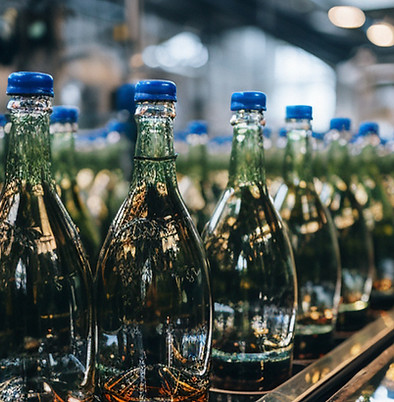
Clean-In-Place Monitoring
The Science of Consistency: CIP Monitoring for Beverage Manufacturers
What is Clean-In-Place Monitoring?
Clean-in-place (CIP) monitoring automates the cleaning of equipment in beverage manufacturing, ensuring hygiene without disassembling parts. By tracking flow rates, temperature, and chemical usage, it ensures cleaning meets hygiene standards, preventing contamination and maintaining product quality.
Real-time CIP monitoring also boosts efficiency by optimizing cleaning cycles, reducing downtime, and lowering chemical use. It helps manufacturers detect issues early and prolongs equipment life while meeting strict safety standards.


PRODUCTION IMPACT
What are the expected benefits of Cleaning-In-Place Monitoring?
40%
potential reduction in water usage in production lines
SOURCE: Process Online
20%
potential reduction in chemical usage for cleaning cycles
SOURCE: Process Online
15%
improvement in machine cleaning efficiency
SOURCE: FoodProcessing.com.au

THE PROBLEM
One Missed Step Can Spell Disaster When Using Sugars & Flavors
Beverages with sugar and flavor intensive products must ensure the proper Cleaning-In-Place (CIP) protocols are run during changeover processes. If variables like step sequence, temperature, time intervals, and flow regulation are not met, manufacturers risk compromising product quality–and in some cases, may even risk product contamination and unmet food safety regulations.
Additionally, incorrect usage of additives such as caustic or other cleaning agents may deplete a factory’s raw-materials and affect ESG targets. If not monitored closely, plants are at risk of lost revenue, brand reputation, and potentially, shut down.
THE SOLUTION
Use Sweet, Sweet Statistics For Consistent Flows
Using your specific CIP matrix as a base, Pocket Factory determines if the step sequence, time intervals, and process variables in the CIP are being followed consistently.
Pocket Factory continuously monitors all cleaning and upstream preparation steps, creating a process log, as well as visualizations around execution and possible errors in the CIP process. This continuous and automatic quality monitoring warns users when deviations from pre-set benchmarks occur–allowing interventions to be made quickly, and preventing defective products from reaching the market.


Quality Resources
Recommendations and thought leadership on the 4th wave of industry standards and beyond.







